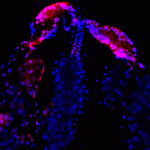Link to Pubmed [PMID] – 20520794
PLoS Negl Trop Dis 2010;4(5):e646
The dramatic global expansion of Aedes albopictus in the last three decades has increased public health concern because it is a potential vector of numerous arthropod-borne viruses (arboviruses), including the most prevalent arboviral pathogen of humans, dengue virus (DENV). Ae. aegypti is considered the primary DENV vector and has repeatedly been incriminated as a driving force in dengue’s worldwide emergence. What remains unresolved is the extent to which Ae. albopictus contributes to DENV transmission and whether an improved understanding of its vector status would enhance dengue surveillance and prevention. To assess the relative public health importance of Ae. albopictus for dengue, we carried out two complementary analyses. We reviewed its role in past dengue epidemics and compared its DENV vector competence with that of Ae. aegypti. Observations from “natural experiments” indicate that, despite seemingly favorable conditions, places where Ae. albopictus predominates over Ae. aegypti have never experienced a typical explosive dengue epidemic with severe cases of the disease. Results from a meta-analysis of experimental laboratory studies reveal that although Ae. albopictus is overall more susceptible to DENV midgut infection, rates of virus dissemination from the midgut to other tissues are significantly lower in Ae. albopictus than in Ae. aegypti. For both indices of vector competence, a few generations of mosquito colonization appear to result in a relative increase of Ae. albopictus susceptibility, which may have been a confounding factor in the literature. Our results lead to the conclusion that Ae. albopictus plays a relatively minor role compared to Ae. aegypti in DENV transmission, at least in part due to differences in host preferences and reduced vector competence. Recent examples of rapid arboviral adaptation to alternative mosquito vectors, however, call for cautious extrapolation of our conclusion. Vector status is a dynamic process that in the future could change in epidemiologically important ways.

